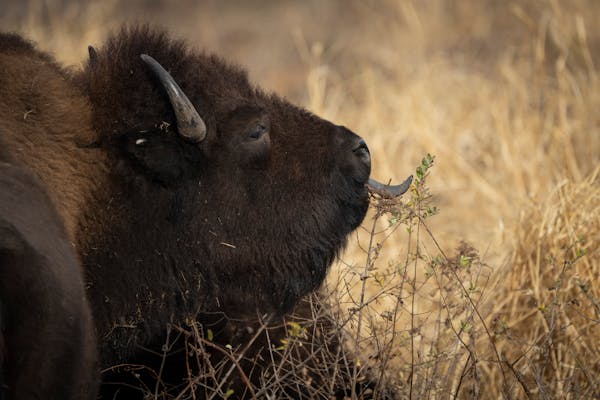The Shakopee Mdewakanton Sioux Community will reintroduce pte, or bison, this fall, bringing back what they believe is a sacred species to their tribal acreage in Shakopee after the animal was nearly wiped out more than a century ago by white settlers.
"What's exciting to me is bringing bison back to the state because at one time they were exterminated like us," said Cyndy Milda, the community's cultural outreach organizer. "We're very close to them — they're our relative."
Between 10 to 15 American plains bison will live on 165 acres near the junction of County Road 83 and Eagle Creek Boulevard.
The pte, pronounced puh-TAY, will graze freely within an enclosure on native prairie plants, part of the 1,000 acres of prairie the tribe has restored in the past two decades.
The animals will help tribal members learn more about their culture, she said.
"The buffalo are resilient; we are resilient as Dakota people," Milda said. "To me, it's just power — power as in our culture and knowledge of who we are."
The animals will come from the Sisseton-Wahpeton Oyate tribe on the Lake Traverse Reservation in South Dakota. After the Shakopee tribe gave them a grant in 2018, the Sisseton-Wahpeton Oyate wanted to pay them back with bison.
Post-pandemic, Shakopee Mdewakanton Sioux Community tribal members have spent more than two years thinking about the best way to bring the animals here, talking with other agencies, tribes and companies about the species and learning best practices, including how to provide water, what kind of fencing to use and which safety protocols to apply, Milda said.
The tribe once relied on bison for food, medicine and materials. Tens of millions of them once lumbered across the plains. That connection to the species faltered when colonization occurred in the 19th and 20th century, a tribal news release said.
Milda said that historically, the Dakota people would follow bison down into river valleys in the winter and the animals would show them where to camp. The bison protected the people, she said, and one would sacrifice itself to provide meat for the tribe.
Both the Dakota people and bison are matriarchal, she said, and it's valuable to watch the mother bison interact with the herd.
"That shows us as Dakota people how we should be behaving," she said.
Bison are known as a keystone species, or one that other plants and animals in the ecosystem depend on. They help maintain the prairie by grazing and wallowing. Grazing helps mow down grasses so there's more space and sunlight for wildflowers and other plants to sprout. Wallowing, or rolling around, exposes mineral soil that helps seeds grow and creates depressions in the soil where watering holes form. The watering holes become breeding habitat for frogs, toads and salamanders.
The animals are good for the land, but their presence also helps people stay focused and act in a positive way, she said.
"We've seen some pretty amazing things on how the pte have helped our people who are struggling in different areas of life," she said.
Both the Red Lake Nation and Prairie Island Indian Community have bison.
Several other groups in Minnesota have acquired bison in recent years, too.
In the metro, both Cedar Creek Ecosystem Science Reserve in East Bethel and the Belwin Conservancy in Afton have bison herds.
Dakota County also reintroduced bison in the fall of 2022 at Spring Lake Park Reserve in Hastings. There are a dozen animals there now, including four calves, and they're doing great, said Tom Lewanski, Dakota County's natural resources manager.
The south metro county is a member of the Minnesota Bison Conservation Herd and received their animals from two state parks: Blue Mounds and Minneopa, who are other partners. The Minnesota Zoo and Oxbow Park in Olmstead County also are part of the conservation herd effort.
Together, the conservation herd has about 150 bison among five locations, said Mary Mallinger, conservation biologist at the Minnesota Zoo. An eventual goal is to have 500 animals.
Mallinger said zoo staff have been working with the Shakopee tribe, which has partnered with the zoo on other conservation projects, as they prepare to host a herd.
"Seeing bison return to the landscape is always a good thing," she said.
Ashley Steevens, park manager at Minneopa State Park, said bison arrived there in 2015. They are self-sufficient and easy to care for, she said, and "pretty gentle" on the ground despite their large size.
The creatures have taught people how parts of nature are intertwined, and they help visitors imagine how Minnesota looked centuries ago, she said.
The park has seen an increase in visitors since the bison came, she said.
"People are really excited about bison," she said.

Want to share info with the Star Tribune? How to do it securely

'Safe recovery sites' would offer syringes, naloxone and more to people using drugs. The plan could be in peril.
New Minnesota GOP leaders seek peace with party's anti-establishment wing

Who is Republican Lisa Demuth, Minnesota's first House speaker of color?

